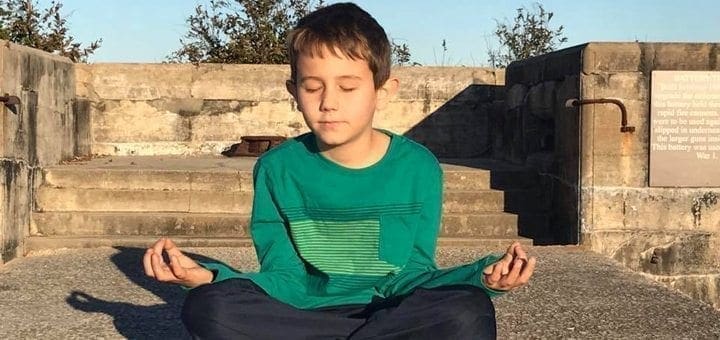Using Yoga to Benefit Individuals with ADHD

Using Yoga to Benefit Individuals with ADHD
Sometimes a quick 5-minute break to reconnect with your mind, body, and environment can be incredibly effective for reestablishing focus and regulating activity levels, especially for those with ADHD. Yoga can help accomplish this, and it is not only beneficial from a physical standpoint, but can also relax your systems, help you focus, and even reduce those endless loops of thoughts that run in your head.
In today’s busy world, it might be difficult to get to a yoga class. Additionally, your child might not be interested or able to actively participate in a structured yoga class environment. However, don’t worry! Below are just a few strategies and components of yoga that could be beneficial for an individual with ADHD.
 Guided Imagery
Guided Imagery
- The instructor guides another person(s) through a series of calming or helpful images, using descriptive scenes and situations.
- Live guides or audio recordings are both options, allowing this practice to be done in groups, pairs, or individually.
- Click here for examples.
Visual Imagery
- The individual identifies and visualizes scenes or situations that provide a focal point for calm and focused behaviors. Examples could include remembering the visual details of a recent vacation or a favorite book.
- Unlike guided imagery, there is no script or narrator – you are your own guide.
Controlled Breathing
- These techniques encourage breathing to be a conscious act, while aid in regaining focus and calm.
- Try using visual supports here! For example, having a fake flower and a candle to see or hold can help guide children to “smell the flowers and blow out the candles.”
Body Positions
- When we think of yoga, we often think of various body positions. Many of these poses can be calming and fairly easy to do.
- Hold one position for a while or make it a series of poses.
- Check out these poses for ideas!
Much of yoga is about making the mind-body connection. When we are more aware of what our bodies are doing, we are more likely to cause change in our behaviors. Have fun, but remember to have patience. Be prepared to assist your child with the process and provide reinforcement and support for cooperation and participation. Do the practices with them.. .you’ll both reap the benefits!
More Like This
- What Is Emotional Intelligence and Why Is It so Important?
- Tech for Developing Mental Strength for Life’s UPS and Downs
- 11 Reasons Why You Should Try Mindfulness Meditation and How to Do It!
- A “Happy” World: It’s Time for Some Meditation in This Fast-Paced Nation
- Your Aura and Its Connection to Alternative Medicine
- Yoga Tips for Traveling with Children
- Why is Mindfulness a Superpower
- Yoga As Alternative Therapy
- 5 Tips for Bringing Exercise into the Daily Routine! {Tip 14 of 31}
- Simple Yoga Exercises for Improved Development
- A Simple Yoga Exercise to Build Brain Power
- Reiki and Children with Learning Disabilities
- Healing with Music
This post originally appeared on our January/February 2017 Magazine


